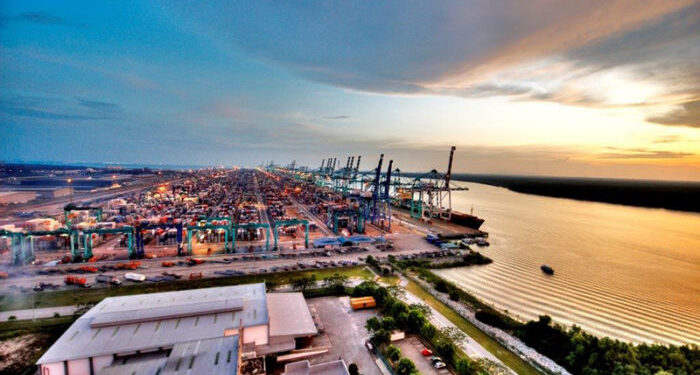Malaysia’s Port of Tanjung Pelepas (PTP), a joint venture between APM Terminals and the MMC Group, has been selected to join the Partnerships for Infrastructure (P4I) initiative.
The P4I is a government-to-government decarbonisation scheme between Malaysia and Australia. Over the next five years, PTP will spend RM3 billion on upgrading its terminal footprint, including automation, digitalisation, and other port functions.
We hope that the successful implementation of this initiative will become a game changer in transforming the regional maritime industry and further promote opportunities for Malaysia to lead in this area of maritime decarbonisation
… said PTP Chief Executive Officer, Marco Neelsen.
Alternative fuels and bunkering
Malaysia has the potential to develop into a regional green fuel bunkering hub with the support of both industry and government, according to a study by the Australian Government’s Partnership for Infrastructure (P4I). The study also found that methanol is the green fuel option receiving the most investment from shipping lines.
The study was undertaken in response to a request from Malaysia’s Transport Ministry (MoT) to better understand zero-carbon bunkering and explore the potential for green refuelling sites in Malaysia.
Given the size and strategic location of PTP, it has the potential to play a key role regionally and globally in supporting maritime and trade decarbonisation
… supplied the Executive General Manager Commercial at Port of Melbourne, Shaun Mooney.
Electrification
PTP has electrified and digitalised many of its assets, resulting in emissions reductions, increased efficiency and less waste, according to the company. For instance, it will electrify all its rubber tyred gantry (RTG) cranes — mobile cranes that stack and transport containers — and yard by the end of this year.
The port is also testing electric prime movers, which are the trucks that move containers, and electric or hybrid fuel tugs and pilot boats.
PTP’s digital transformation also involves tracking its assets and using digital twins. Functioning as computer-based models, digital twins offer real-time visualisations of the port’s operations, infrastructure and assets to, for example, calculate optimal routes for its trucks and boats to save on fuel.
Digitalisation, operational efficiency and sustainability are all moving as one transformation activity. It’s something that we can see having a positive impact. Rather than working on your own, we do the transformation together
… commented Khairul Amalin Abd Rahman, Senior General Manager at PTP
The port is also using technology such as the vessel traffic management system (VTMS) connected to the Marine Resource Management System (MRMS) and Vessel Traffic Monitoring and Information System (VTMIS) to improve efficiency and safety of navigation.
The MRMS is able to integrate the entire process, from booking a berth to populating shipping registers, ordering pilots and providing vessel arrivals and departures. In 2022, PTP handled 10,608 vessel calls.
Our customers, which are the shipping lines, forwarders, warehouses and their customers, have different demands than they had 10 years ago. Therefore, this is part of our transformation journey.
… concluded Marco Neelsen, CEO of PTP.


































































